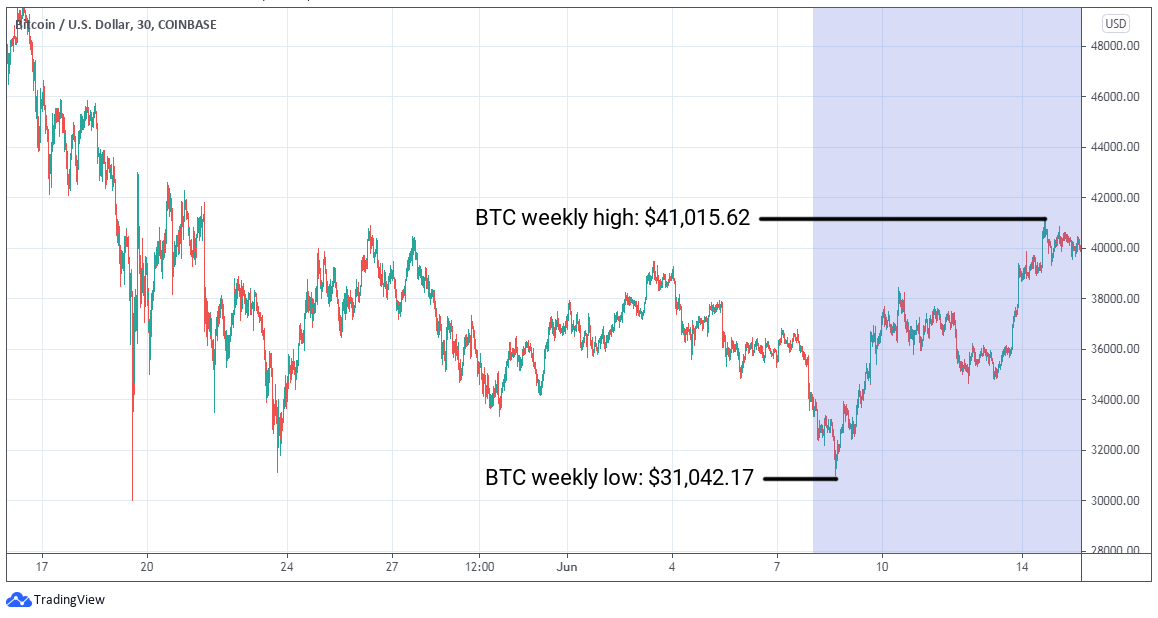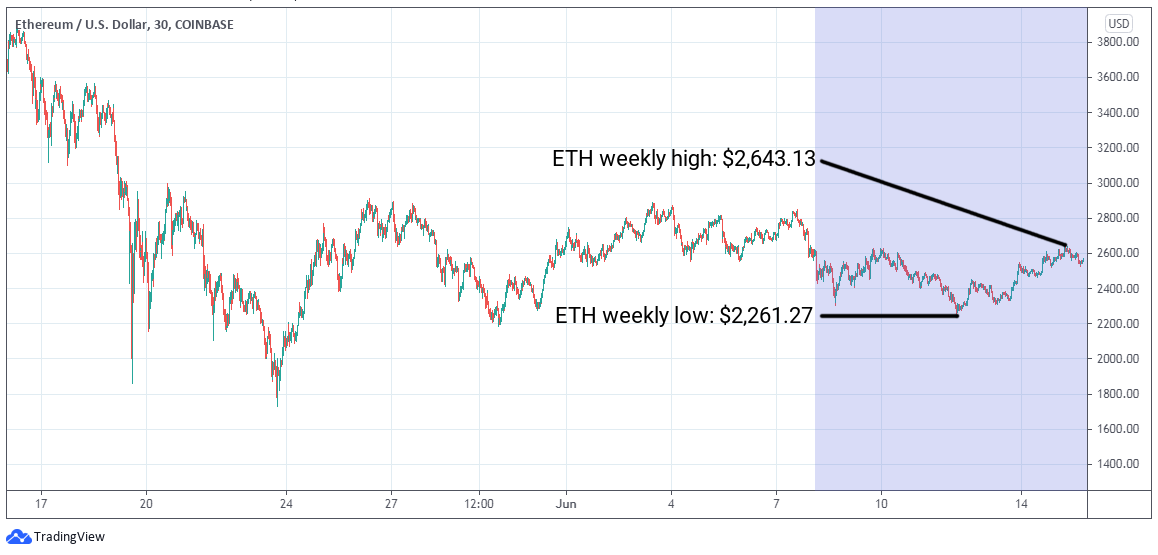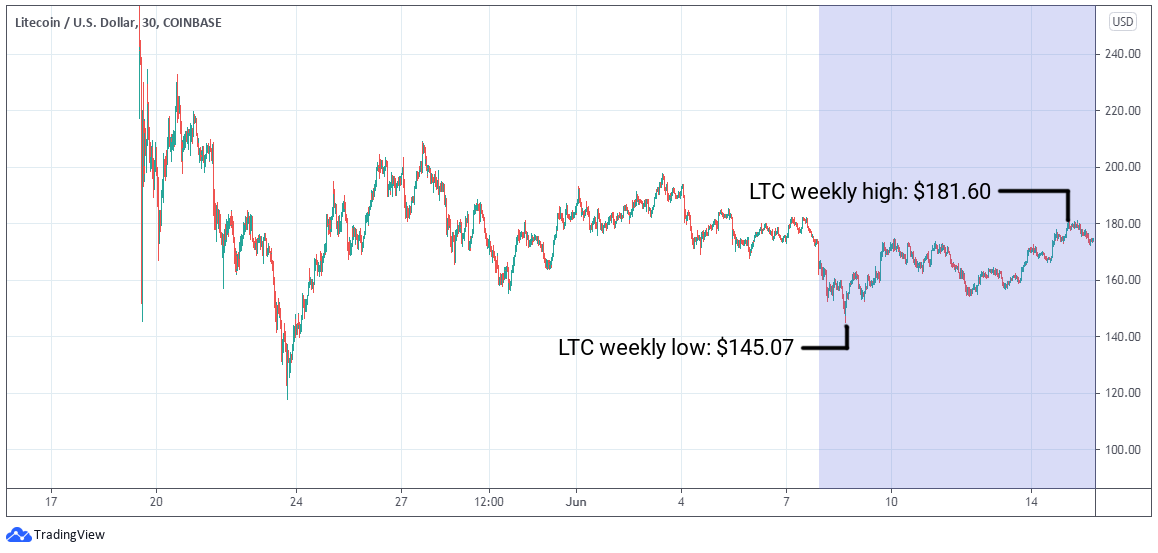ETC Group Crypto Minutes Week #24
Tesla CEO drives Tesla back into Bitcoin and Goldman Sachs plans to extend its crypto options for wealthy investors
Tesla CEO drives Tesla back into Bitcoin and Goldman Sachs plans to extend its crypto options for wealthy investors

News that the Basel Committee had put forward proposals for worldwide regulations that could help banks to hold, trade and invest in cryptoassets dominated conversations this week. The Switzerland-headquartered global banking watchdog is held up as the gold standard for regulators.
Cryptoassets have had to endure years in the regulatory wilderness, subsisting on region-level or country-specific guidelines. That has made it difficult for major international financial institutions to throw their weight behind the nascent asset class.
Implicit support from the Basel Committee in the form of black and white regulations may just blow those doors wide open. In a paper published on 10 June the regulator said it could fold stablecoins under existing banking regulations, and would consult on the wider treatment of bitcoin and other cryptoassets until 10 September 2021.
In general the Basel Committee’s report and subsequent consultation seeks to split cryptoassets into two broad groups. The first (Group 1) include fiat-backed stablecoins like Tether (USDT) and USD Coin (UDSC), commodity-backed stablecoins (those collateralized using physical assets like real estate, oil or precious metals) and synthetic cryptoassets which represent a claim on securities, including tokenised equities. Group 2 cryptoassets include currencies like bitcoin and litecoin and will be “ subject to a new conservative prudential treatment”. Under the terms of the proposal, banks will need to hold enough capital to cover cryptoasset losses in full.
It was the Basel Committee’s recommendations in the wake of the 2008-09 financial crisis that required banks to hold regulated levels of Tier-1 capital to prevent another major collapse.
Known for roiling near-term equity and crypto markets with the click of a tweet, Elon Musk added an uncharacteristically stable hand this week. The Tesla (NASDAQ:TSLA) CEO dropped his apparent fascination for Dogecoin to reiterate that his electric vehicle giant only sold 10% of its bitcoin holdings “to confirm BTC could be liquidated easily without moving the market”. The company revealed in a Q1 earnings statement that Tesla sold $272m of digital assets, which helped reduce its operating losses by $101m. That would leave $1.33bn of BTC on the car company’s balance sheet, accounting for purchase prices around 8 February 2021.
Musk also hinted at another bite of the cherry for retail investors to use bitcoin for vehicle purchases.
When there’s confirmation of reasonable (~50%) clean energy usage by miners with positive future trend, Tesla will resume allowing bitcoin transactions. Elon Musk, Twitter, 14 June 2021
That could happen much faster than expected as China’s control of the bitcoin hashrate continues to fall. Xi Jinping’s countrywide crackdown on mining using coal power plants has accelerated in recent weeks, and it is North American mining pools like Foundry USA that are scooping up the proceeds.
US companies like Square have already committed to producing net zero carbon by 2030. Jack Dorsey’s payments company is also behind the Bitcoin Clean Energy Investment Initiative, which supports bitcoin miners developing green energy technologies to accelerate the transition to clean power usage.
Goldman Sachs (NYSE: GS) is to extend its crypto options for wealthy investors by offering options and futures on ETH, the base currency of the Ethereum blockchain. A Monday 14 June Bloomberg exclusive told how the Wall Street giant would add the cryptoasset derivatives to its growing stable of investment choices.
Investors should also watch out for increasing M&A activity in the space, the report noted. Goldman recently led a $15m funding round for crypto data provider Coin Metrics in a deal that saw McDermott join the board of directors.
We are looking at a number of different companies that fit into our strategic direction. Mathew McDermott, head of Digital Assets, Goldman Sachs
The banking giant’s move into Ether follows CME Group offering the first ever regulated ETH futures in February 2021.
Goldman made it clear in a May 2021 report, ‘Crypto: a new asset class?’ that it was targeting Ether as a major source of inflows into digital currencies and the blockchain market more broadly.
Ethereum is widely seen as the most important cryptoasset project in the world. It powers a near-total majority of rapid-growth decentralised finance markets, along with niche subsectors like NFTs, and has birthed a legion of blockchain-based applications. Speaking on a recent podcast with MIT researcher Lex Fridman, Ethereum’s co-creator and figurehead noted why institutional investors are so excited about the blockchain’s future.
[While] Bitcoin is the blockchain for money...Ethereum is built from the start as a general purpose blockchain. There is Ether the asset, but you can also make decentralised financial things [on Ethereum], what we call DeFi today. You can make decentralised domain name systems, you can put prediction markets on it… Vitalik Buterin, 4 June 2021
There is a huge need today for Ethereum’s decentralised smart contract-based innovation. Just one example would be in carbon credit trading markets — which Ethereum’s system of trustless participation, automated execution and free cross-border payments through USD-based stablecoins can achieve.
And as Ethereum looks ahead to its second major iteration, ETH2, the switch to proof of stake, a 99.95% reduction in energy use, and deflationary currency mechanics, investors are grasping the opportunity to gain exposure to the near-$300bn market cap blockchain project.
BTC/USD
Markets took a turn for the better this week after multiple sessions of bearish price action.
Bitcoin, for its part, gained strongly from Tuesday 8 June’s low at $31,042.17 and on Monday 14 June touched $41,015.62, a 32.1% uplift on the week and its highest price point in nearly a month. By the week’s end, BTC appeared to flip the script to turn the psychologically-important $40,000 level into support from a point of significant near-term resistance. Intraday trading volume is also growing as June progresses.

ETH/USD
ETH markets remained steady this week with little volatility, and managed to reverse a midweek fall from a starting point of $2,436.09. The dip to $2,261.27 on Saturday 12 June now appears to be a recent bottom, as the programmable blockchain gained 13.6% to top out the week at $2,569.51.

LTC/USD
The price of Litecoin too bounced strongly from a recent low on Tuesday 8 June, at $145.07. Climbing 25.2% to its weekly high of $181.60 represents the best result for the payments blockchain in some time, and while it couldn’t hang on to this high watermark, LTC finished the week only 5% from its high point at $174.47. In recent weeks the popular blockchain has dipped out of the top 10 cryptoassets by market cap, first leapfrogged by Bitcoin Cash, Solana and Chainlink. However, given this recent strength, its $11.62bn valuation — at time of writing — has overtaken those latter two competitors and is now closing in on BCH.

Important information:
This article does not constitute investment advice, nor does it constitute an offer or solicitation to buy financial products. This article is for general informational purposes only, and there is no explicit or implicit assurance or guarantee regarding the fairness, accuracy, completeness, or correctness of this article or the opinions contained therein. It is advised not to rely on the fairness, accuracy, completeness, or correctness of this article or the opinions contained therein. Please note that this article is neither investment advice nor an offer or solicitation to acquire financial products or cryptocurrencies.
Before investing in crypto ETPs, potentional investors should consider the following:
Potential investors should seek independent advice and consider relevant information contained in the base prospectus and the final terms for the ETPs, especially the risk factors mentioned therein. The invested capital is at risk, and losses up to the amount invested are possible. The product is subject to inherent counterparty risk with respect to the issuer of the ETPs and may incur losses up to a total loss if the issuer fails to fulfill its contractual obligations. The legal structure of ETPs is equivalent to that of a debt security. ETPs are treated like other securities.
Bitwise is one of the world’s leading crypto specialist asset managers. Thousands of financial advisors, family offices, and institutional investors across the globe have partnered with us to understand and access the opportunities in crypto. Since 2017, Bitwise has established a track record of excellence managing a broad suite of index and active solutions across ETPs, separately managed accounts, private funds, and hedge fund strategies—spanning both the U.S. and Europe.
In Europe, for the past four years Bitwise (previously ETC Group) has developed an extensive and innovative suite of crypto ETPs, including Europe’s largest and most liquid bitcoin ETP.
This family of crypto ETPs is domiciled in Germany and approved by BaFin. We exclusively partner with reputable entities from the traditional financial industry, ensuring that 100% of the assets are securely stored offline (cold storage) through regulated custodians.
Our European products comprise a collection of carefully designed financial instruments that seamlessly integrate into any professional portfolio, providing comprehensive exposure to crypto as an asset class. Access is straightforward via major European stock exchanges, with primary listings on Xetra, the most liquid exchange for ETF trading in Europe.
Retail investors benefit from easy access through numerous DIY/online brokers, coupled with our robust and secure physical ETP structure, which includes a redemption feature.